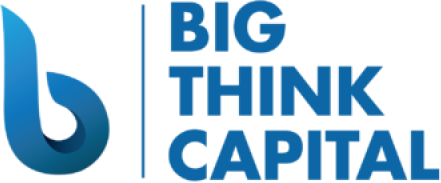The Impact of Recent Federal Interest Rate Changes on Your Small Business Loan Strategy
Estimated reading time: 7 minutes
- Understanding current interest rates is crucial for small business financing strategies.
- The recent increase in the federal funds rate to 5.25% affects borrowing costs.
- Adapting your loan strategy can help mitigate the impact of rising interest rates.
- Exploring diverse funding options is essential in a higher-rate environment.
Table of Contents
- Understanding Interest Rate Changes
- Recent Federal Interest Rate Changes
- How Interest Rate Changes Affect Small Business Loans
- Practical Insights for Your Financing Strategy
- Preparing for Future Rate Changes
- Conclusion
- FAQ
Understanding Interest Rate Changes
The Federal Reserve regularly adjusts interest rates to control economic growth and inflation. In 2025, interest rates have experienced notable fluctuations due to ongoing inflationary pressures and economic recovery post-pandemic. For small business owners, an understanding of these changes is crucial as they influence loan availability, terms, and overall borrowing costs.
Recent Federal Interest Rate Changes
As of early 2025, the Federal Reserve has adopted a more cautious approach, raising benchmark interest rates to combat inflation, which remains above target levels. The current federal funds rate is approximately 5.25%, an increase from 4.75% in late 2024. This change reflects the Fed’s attempts to stabilize prices while fostering economic growth.
For more detailed information on these changes, visit the Federal Reserve’s official website here.
How Interest Rate Changes Affect Small Business Loans
The ripple effects of federal interest rate changes are felt across various types of small business loans. Here’s how these adjustments can influence your next financing decision:
1. Cost of Borrowing
Higher interest rates mean increased costs for loans. The following are crucial points to consider:
- Loan Interest: With rising rates, the interest you’re charged on new loans will also increase, potentially leading to higher monthly payments.
- Total Loan Repayment: Over time, the cumulative cost of borrowing can rise significantly due to high-interest payments.
- Budget Planning: With increased repayment obligations, businesses must adjust their budgets accordingly to allocate appropriate funds for loan servicing.
2. Loan Types and Availability
The type of financing you choose can also be impacted by interest rates:
- SBA Loans: Interest rates for Small Business Administration loans generally correlate with the prime rate. As rates increase, so will the cost of these loans, although they remain more favorable compared to traditional bank loans.
- Lines of Credit: Rates for lines of credit can also vary, leading to higher variable costs based on the federal funds rate.
- Merchant Cash Advances: These can become more expensive, as lenders may increase fees to offset their risk in a higher-rate environment.
3. Business Growth Strategies
Interest rate changes compel business owners to reconsider their growth strategies. Here are some avenues to explore:
- Prioritizing Loan Types: Businesses may lean towards fixed-rate loans to lock in lower rates before potential future increases.
- Shortening Loan Terms: To reduce overall interest costs, some may consider shorter terms, despite higher monthly payments.
- Taking Advantage of Grant Opportunities: As rates increase, alternative funding options like grants may become more appealing.
Practical Insights for Your Financing Strategy
Arming yourself with knowledge is vital for navigating the changing landscape of business financing. Here are three actionable insights to strengthen your loan strategy in light of recent interest rate changes:
1. Reassess Your Current Financing Needs
Evaluate your current financial situation. Ask yourself:
- What are your cash flow requirements for the next 12 to 24 months?
- Are you looking to expand, or do you need funds to stabilize operations?
- Are current loans affecting your ability to grow due to high-interest repayments?
Understanding your financing needs will permit you to make strategic decisions when seeking a loan.
2. Explore Diverse Funding Options
Given rising interest rates, diversifying your funding sources can mitigate risks. Consider:
- Equipment Financing: If upgrading equipment is essential, look into specific financing options that may have lower costs over time.
- SBA Loans: These can offer favorable terms and might help shield you from fluctuations in variable interest rates.
- Alternative Lenders: Research alternative lenders that provide flexible financing solutions tailored for small businesses, even in a higher-rate environment.
3. Build Strong Relationships with Lenders
Effective communication with lenders can benefit your business. Building strong relationships can:
- Provide insights into potential loan products and terms.
- Help you negotiate better rates or terms based on your business’s financial health.
- Ensure prompt access to funds when opportunities arise.
Preparing for Future Rate Changes
Beyond immediate impacts, it is wise to prepare for future interest rate changes. Here are strategies to consider:
- Regular Financial Reviews: Conduct periodic assessments of your financial health to adapt quickly to rate changes. Consider working with a financial advisor specialized in small business financing.
- Stay Informed: Keep abreast of macroeconomic factors that influence rate decisions. Understanding economic indicators such as inflation rates and employment statistics can help you anticipate loan costs.
- Diversify Revenue Streams: Strengthening your business model through diversification can improve cash flow and reduce reliance on borrowed funds.
Conclusion
The recent shifts in federal interest rates are a critical factor in determining your small business loan strategy. Whether you’re seeking to secure funding for expansion, manage your cash flow, or navigate cash constraints, understanding these changes will help you make informed financial decisions.
At Big Think Capital, our mission is to empower small business owners like you to navigate the complex funding landscape. We offer a wide range of funding options, including working capital advances, SBA loans, and equipment financing, to meet your unique needs.
If you’re looking to explore your financing options and develop a customized loan strategy to adapt to current market conditions, we are here to help. Learn more about our services at bigthinkcapital.com or speak with one of our funding experts today. Take the next step towards making informed financing decisions that align with your business goals.
FAQ
1. How often does the Federal Reserve change interest rates?
The Federal Reserve reviews interest rates periodically, typically during scheduled Federal Open Market Committee meetings, which occur about every six weeks.
2. What is the current federal funds rate?
As of early 2025, the federal funds rate is approximately 5.25%.
3. How can small businesses prepare for rising interest rates?
Small businesses can prepare by reassessing their financing needs, exploring diverse funding options, maintaining strong relationships with lenders, and regularly reviewing their financial health.
4. Are SBA loans a good option during rising interest rates?
Yes, SBA loans often provide favorable terms and can help small businesses shield against fluctuations in variable interest rates.






